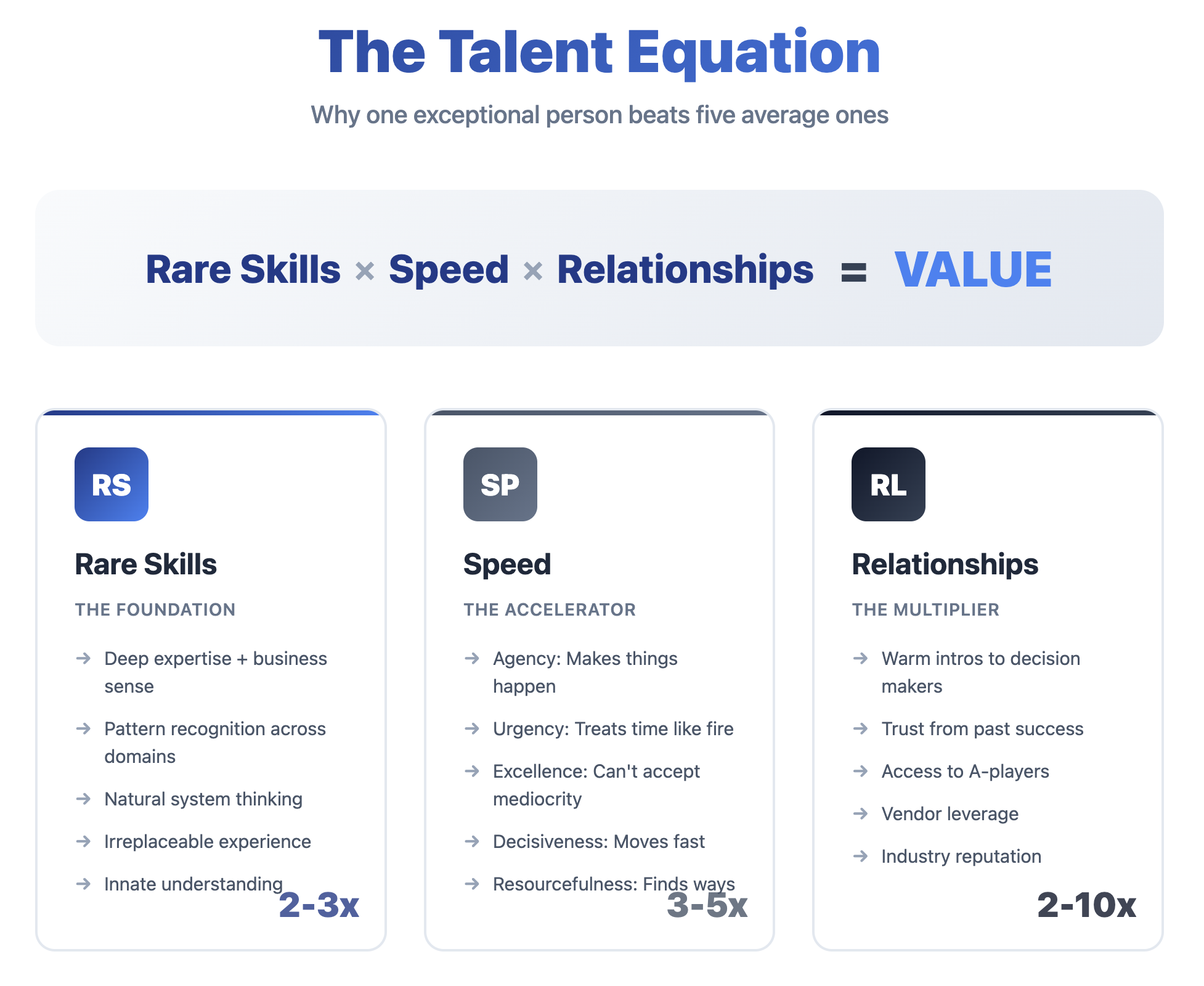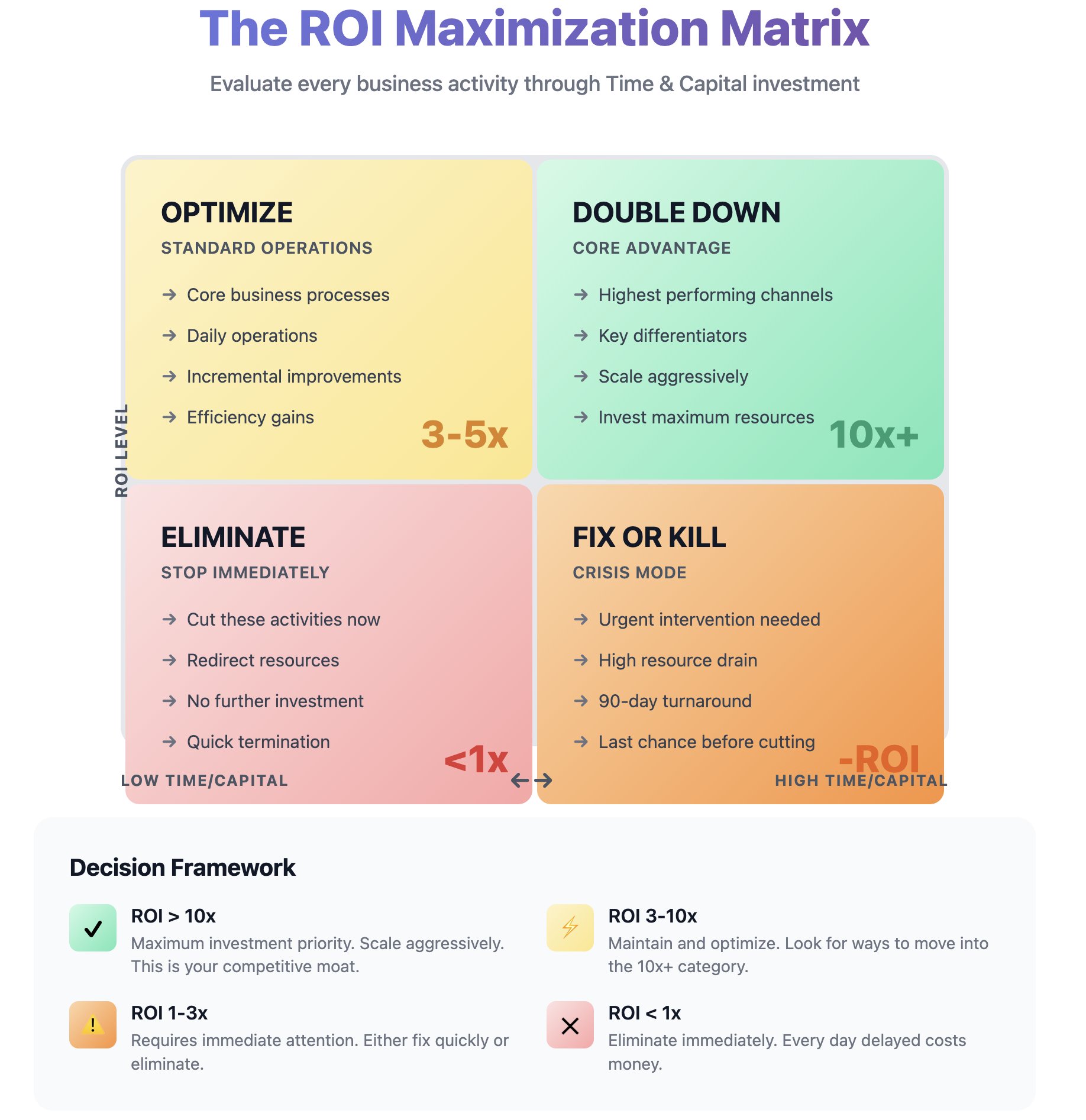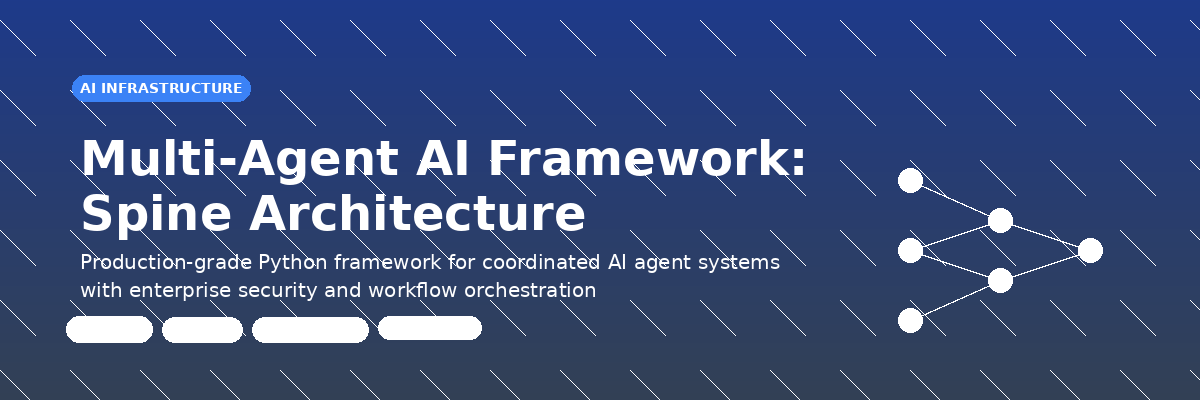Every business operates on a simple truth that most leaders overcomplicate: you put resources in, and revenue comes out. The companies that thrive aren't necessarily those with the most resources—they're the ones generating the highest returns on their two scarcest assets: time and capital.
Here's what keeps me up at night though. Anyone can buy the same equipment you have. They can lease identical office space, subscribe to the same software, even poach your vendors. So if everyone has access to the same inputs, why do some businesses dominate while others struggle to break even? The answer lies not in what resources you have, but in how you deploy them. Your processes, your people's rare capabilities, and the relationships that compress timelines—these create the moat that competitors can't easily cross.
Understanding the Hierarchy of Business Thinking
Level 1: The Prime Directive
At the foundation, there's one rule that governs everything else: resources must generate revenue, with ROI as your north star. This sounds obvious until you look at how most businesses actually operate. They'll spend hours in meetings that generate no decisions, maintain processes because "that's how we've always done it," and keep team members busy instead of productive.
Think about your last week. How many activities would survive this simple test: Did this generate a return multiple on the time or money invested? If you're honest, probably less than half. The discipline to constantly evaluate and eliminate low-ROI activities separates operators from owners, busy companies from profitable ones.
👉 Tip: Start tracking the ROI of your three most time-consuming weekly activities. Calculate the revenue impact divided by hours spent. If any activity delivers less than 3x return, either optimize it dramatically or eliminate it entirely.
Level 2: The Critical Resources
Time and capital aren't just important—they're the only truly finite resources you have. Once an hour passes, it's gone forever. The capital you have at any moment creates a hard ceiling on what you can accomplish. Everything else—your inventory, equipment, even your office lease—these are just capital wearing different costumes.
I've watched businesses fail not because they ran out of money, but because they ran out of time to figure out their model. Others had plenty of time but couldn't access the capital to scale when their market window opened. Managing these two resources isn't just about efficiency; it's about survival.
Consider how differently you'd run your business if you viewed every employee hour as a $500 investment (which, fully loaded, it often is). Would you still have that weekly all-hands that could be an email? Would you still delay decisions that cause three departments to idle? The math becomes brutal when you're honest about it.
👉 Tip: Calculate your company's true hourly burn rate (total monthly expenses divided by total working hours). Post this number where everyone can see it. Watch how quickly meetings get shorter and decisions get faster.
Level 3: The Competitive Differentiators
Now we hit the interesting part. Since everyone can access the same basic resources, sustainable advantage comes from three sources that can't be easily copied: process, talent, and relationships.
Process is how you uniquely combine and deploy resources. Talent represents the rare skills and traits that can't be hired off the street. Relationships are the accelerators that compress time and multiply outcomes. Master these three, and you've built a business that competitors can't replicate even with unlimited funding.
Why Process Is Your Real Business
Let me be blunt: your business isn't what you sell—it's how you deliver it. Two restaurants can buy ingredients from the same supplier, hire from the same labor pool, and operate in the same neighborhood. One generates lines around the block with 40% margins. The other struggles to break even. The difference? Process.
The winning restaurant has engineered their kitchen flow to push out orders in 4 minutes instead of 18. They've designed their menu to use overlapping ingredients that reduce waste. Their onboarding process gets new servers productive in 3 days instead of 2 weeks. Same inputs, completely different outcomes.
Your processes are your business DNA—the unique way you sequence activities, allocate resources, make decisions, and scale operations. They're the accumulated wisdom of every mistake you've made, every optimization you've discovered, and every innovation you've implemented.
👉 Tip: Map your core value delivery process from customer contact to cash collection. Time each step. Now redesign it as if you had to deliver the same value in half the time. You'll be shocked at what becomes obvious.
Building Your Process Moat
The beautiful thing about process excellence is that it compounds. Each optimization makes the next one easier to spot. Each improvement frees up resources to invest in the next breakthrough. Before long, you're operating at a level that looks impossible to outsiders.
Take customer onboarding. Most companies treat it as a necessary evil—forms to fill out, accounts to create, training to deliver. But what if you engineered your onboarding to be so smooth that customers literally couldn't imagine switching to a competitor? What if the process itself became a differentiator?
I know a SaaS company that reduced customer onboarding from 14 days to 4 hours. They didn't just save time—they transformed their entire business. Customer satisfaction jumped 40%. Churn dropped by half. Sales cycles shortened because prospects knew they could be live the same day. That's process as competitive weapon.
Tools to Consider:
- Process mapping software: Miro, Lucidchart, or even a whiteboard
- Time tracking: Toggl or Clockify to understand where time really goes
- Automation platforms: Zapier, Make, or custom scripts to eliminate repetitive tasks
- Process documentation: Notion, Confluence, or Trainual to capture and scale what works
The Hidden Multipliers: Talent and Relationships
Talent—Your Unfair Advantage
Not all employees are created equal, and I'm not talking about skill level. The difference between good and exceptional often isn't what someone knows—it's how they think and operate.

Rare skills are valuable but still acquirable. Someone else can learn the same programming language, get the same certification, or develop the same expertise. What creates exponential value are the combinations that can't be taught: deep technical expertise paired with business acumen, pattern recognition from diverse experience, or the ability to simplify complexity in ways that make everyone else productive.
Then there's innate understanding—the stuff you can't train. Some people can sense market timing like others sense weather changes. They read unspoken customer needs, see system connections that others miss, or navigate organizational dynamics with supernatural ease. When you find these people, you pay whatever it takes to keep them.
But the real force multipliers are personality traits that can't be developed through training.
- Agency—the ability to make things happen without permission or hand-holding.
- Urgency—treating time like the scarce resource it is.
- Excellence—being physically uncomfortable with mediocrity.
- Resourcefulness—finding ways when others see walls.
👉 Tip: Score your team on four force multiplier traits (Agency, Urgency, Excellence, Resourcefulness) from 1-5. Anyone averaging above 4 is worth 2-3x market rate. Anyone below 2 is costing you more than their salary.
A developer with high agency and urgency might cost twice as much but deliver five times the value. That's a 250% ROI. A salesperson with deep relationships might command a premium salary but compress your enterprise sales cycle from 6 months to 6 weeks. The math isn't even close.
Relationships—The Ultimate Time Machine
Relationships are the most undervalued asset on your balance sheet because they don't appear on your balance sheet. Yet they're often the difference between linear growth and exponential scaling.
Customer relationships transform everything. A warm introduction to a Fortune 500 CEO can compress a 6-month sales cycle into 2 weeks. Trust from previous success lets you skip the proof of concept and go straight to implementation. One text message to the right person can generate a $500K contract. Meanwhile, your competitor is still trying to get past the gatekeepers.
Vendor relationships provide hidden leverage. Net 60 payment terms give you 60 days of free capital. Priority during shortages means you deliver while competitors make excuses. Inside information on pricing changes lets you stock up before increases or negotiate better rates. These advantages compound over years.
Talent relationships eliminate your biggest scaling bottleneck. One call to a former colleague can bring an entire A-team from a previous company. You skip recruiting fees (saving $50-200K per senior hire), avoid bad hire risks, and they start productive on day one instead of needing a 3-month ramp.
👉 Tip: List your top 10 most valuable relationships. Calculate how much time or money each has saved/generated for your business. Now identify 10 relationships you should be building. Invest 2 hours weekly in relationship development—the ROI will dwarf any other use of that time.
Framework 1: The ROI Maximization Matrix
Stop making decisions based on gut feel or what sounds good in a meeting. Every business decision should be plotted on a simple matrix that evaluates ROI potential against resource requirements.

The vertical axis represents ROI potential, from negative to extreme. The horizontal axis shows resource intensity, from low time/capital to high. This creates four quadrants that demand different strategies:
Low Resource, High ROI (Optimize): These are your standard operations that run well. Keep them humming but don't over-invest attention here.
High Resource, High ROI (Double Down): This is where your core advantage lives. These activities deserve maximum resources and attention. Scale aggressively.
Low Resource, Low ROI (Eliminate): Stop these immediately. They're noise that distracts from what matters.
High Resource, Negative ROI (Fix or Kill): You're in crisis mode. Either transform these radically and quickly, or shut them down before they sink the ship.
Plot every major activity and initiative. Anything below 3x ROI should be questioned. Anything above 10x ROI should be scaled aggressively. Review monthly, adjust ruthlessly.
👉 Tip: Take your current project list. Calculate the expected ROI for each (be honest about both costs and likely returns). Immediately kill the bottom 20%. Double resources on the top 20%. Watch what happens to your overall performance.
Framework 2: The Time-Capital Trade Algorithm
Here's the decision rule that's transformed how I think about resource allocation: Spend capital to buy time when the time saved generates more ROI than the capital spent.
This seems obvious, yet businesses violate it constantly. They'll spend 6 months building something they could buy for $50K. They'll use junior talent to save money on projects where senior expertise would deliver 10x faster. They'll negotiate vendor contracts for weeks to save 5% when faster delivery would generate 50% more revenue.
Let's walk through the math. You can hire senior talent at $200K instead of $100K. Expensive, right? But that senior person ships your product 6 months faster. Six months of revenue equals $2M. Your ROI is 1,000%. The "expensive" hire was actually cheap.
Or consider paying a premium vendor 2x price for 2-week delivery versus 8 weeks standard. The 6 weeks saved lets you launch before your competitor, capturing $500K in revenue you would have lost. That's a 250% ROI on the premium.
The formula is straightforward: Value of Time Saved = (Revenue/Time × Time Saved) - Capital Spent. If it's positive and beats alternative uses of capital, do it immediately.
👉 Tip: Identify three areas where you're being "penny wise and pound foolish"—saving money but losing time. Calculate the true cost of the time lost. I guarantee you'll find at least one place where spending 2x would generate 10x returns.
Framework 3: The Process Excellence System
Building process excellence isn't about perfection—it's about systematic improvement that compounds over time. Here's the four-stage system that works:
Stage 1: Document Reality
Map your actual processes, not the theoretical ones in your operations manual. Time every step with a stopwatch. Calculate the cost of every resource. Identify the exact moments where value gets created. You'll be amazed at the gaps between what you think happens and what actually happens.
Most businesses discover that 80% of their process steps add no customer value. They're internal handoffs, approval loops, or legacy activities that no one questions. Document reality first, then you can design something better.
Stage 2: Find the Leverage Points
Which 20% of steps create 80% of value? Where does time get stuck waiting for decisions or handoffs? Where does capital get trapped in inventory or work-in-progress? What would need to change for this process to run 10x faster?
Look for bottlenecks, but also look for multipliers—single improvements that cascade benefits throughout the system. Often, fixing one constraint unlocks improvements everywhere else.
Stage 3: Design Your Edge
Now comes the fun part. What if this took 1/10th the time? What if we eliminated this entirely? What if we did the steps in reverse order? What would Amazon or Tesla do with this process?
Don't just optimize—reimagine. The best processes often look nothing like industry standard because industry standard is usually decades of accumulated compromises and outdated assumptions.
Stage 4: Build Moats Through Process IP
Create proprietary methods that become your competitive advantage. Build custom tools that only work with your process. Develop muscle memory in your team so they execute without thinking. Make your process so integral to value delivery that switching to competitors becomes painful for customers.
👉 Tip: Pick your most important customer-facing process. Run a "clean sheet" design session—if you were starting from scratch with current technology, how would you design this? Implement the top three improvements within 30 days.
Integration: Making It Real
Frameworks are worthless without implementation. Here's how to wire this thinking into your daily operations:
Daily Questions
Start each day asking: What's the ROI on how I'm spending the next hour? Can I buy back time by spending capital? Is this process creating competitive advantage? Am I leveraging relationships to compress time?
These questions should become automatic, like checking your mirrors while driving. They'll catch you before you waste resources on low-value activities.
Weekly Reviews
Every Friday, assess: Which activities had the highest ROI? Where did we waste time or capital? What processes need optimization? Which relationships need investment?
Don't just review—rank and stack. Force yourself to identify the top and bottom performers. Success leaves clues, and so does failure.
Monthly Strategy
Step back and ask the harder questions: Are we winning because of our processes, or despite them? Do we have the right talent for our strategy? Which relationships could transform our business if properly developed? Where should we trade capital for time to accelerate growth?
👉 Tip: Create a simple ROI dashboard with five metrics: Revenue per employee hour, Capital efficiency ratio, Process cycle time, Talent density score, and Relationship value generated. Review these weekly. Improve the lowest scorer each month.
The Ultimate Test
Here's the question that cuts through all the complexity: If a competitor had unlimited capital, could they replicate what you do?
If yes, you're competing on capital, and you'll eventually lose to someone with deeper pockets. If no, you've built process, talent, and relationship moats that create sustainable advantage.
Most businesses fail this test because they've optimized for efficiency instead of differentiation. They've focused on doing things right instead of doing the right things. They've managed resources instead of multiplying them.
Points to Remember
Time is more valuable than money. You can raise capital, borrow it, or generate it from operations. Time moves in one direction, and when it's gone, it's gone forever. Every decision should factor in the time cost, not just the financial cost.
Process beats strategy. I've seen mediocre strategies with excellent execution destroy perfect strategies with poor execution. Your strategy is what you plan to do. Your process is what you actually do, every day, repeatedly. Guess which one matters more?
Relationships are systematically underpriced. Most businesses underinvest in relationship building because it's hard to measure and the payoffs are uncertain. This creates opportunity for those who invest consistently. The returns are non-linear—often nothing for years, then suddenly everything.
Talent density matters more than headcount. Five exceptional people will outperform 50 average ones, with less drama and lower total cost. The math is compelling once you factor in management overhead, communication complexity, and decision-making speed.
Speed is a strategy unto itself. In equal markets, the faster company wins. They iterate more quickly, learn faster, and capture opportunities while competitors are still planning. Speed isn't just about moving fast—it's about making decisions fast, learning fast, and correcting fast.
The business that wins isn't the one with the most resources—it's the one that generates the highest return on time and capital through superior processes, rare talent, and powerful relationships. Everything else is just details.




